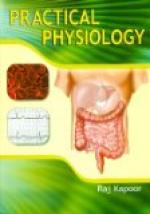In the higher schools, in normal and other training schools, different conditions prevail. Never allow vivisection in any form whatever, either in school or at home. Under the most exact restrictions students in these schools may be taught to make a few simple dissections.
Most teachers will find, however, even in schools of a higher grade, that the whole subject is fraught with many difficulties. It will not require much oftentimes to provoke in a community a deal of unjust criticism. A teacher’s good sense and discretion are often put to a severe test.
Additional Experiments.
To the somewhat extended list of experiments as described in the preceding chapters a few more are herewith presented which may be used as opportunity allows to supplement those already given.
Experiment 193. To examine white fibrous tissue. Snip off a very minute portion from the muscle of a rabbit, or any small animal recently dead. Tease the specimen with needles, mount in salt solution and examine under a high power. Note the course and characters of the fibers.
Experiment 194. To examine elastic
tissue. Tease out a small
piece of ligament from a rabbit’s
leg in salt solution; mount in the
same, and examine as before. Note
the curled elastic fibers.
Experiment 195. To examine areolar tissue. Gently tease apart some muscular fibers, noting that they are attached to each other by connective tissue. Remove a little of this tissue to a slide and examine as before. Examine the matrix with curled elastic fiber mixed with straight white fibers.
Experiment 196. To examine adipose
tissue. Take a bit of fat from
the mesentery of a rabbit. Tease
the specimen in salt solution and mount
in the same. Note the fat cells lying
in a vascular meshwork.
Experiment 197. To examine connective tissues. Take a very small portion from one of the tendons of a rabbit, or any animal recently dead; place upon a glass slide with a drop of salt solution; tease it apart with needles, cover with thin glass and examine with microscope. The fine wavy filaments will be seen. Allow a drop of dilute acetic acid to run under the cover glass; the filaments will swell and become transparent.
Experiment 198. Tease out a small
piece of ligament from the
rabbit’s leg in salt solution; mount
in the same, and examine under a
high power. Note the curled elastic
fibers.
Experiment 199. A crude experiment to represent the way in which a person’s neck is broken. Bring the ends of the left thumb and the left second finger together in the form of a ring. Place a piece of a wooden toothpick across it from the middle of the finger to the middle of the thumb. Put the right forefinger of the other hand up through the front part to represent the odontoid process of the axis, and place some absorbent




